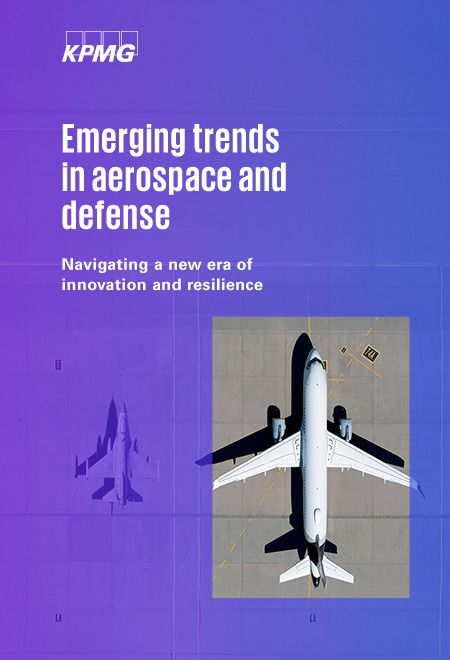When China did not take delivery of around 50 commercial aircraft already ordered from US manufacturer Boeing at the beginning of 2025, it was not an isolated case. The background to this was new import tariffs that would have increased prices by up to 125 per cent. The incident was a clear indication of the geopolitical shift that is currently shaping the aerospace and defence sector and strategically challenging the entire industry.
Stefan Hefter
Partner, Defence & Space
KPMG AG Wirtschaftsprüfungsgesellschaft
Despite the notorious instability caused by trade conflicts, technological change and new regulations that are profoundly changing supply chains and innovation processes, the aerospace and defence sector is growing rapidly: over 40,000 new commercial aircraft are expected to be built worldwide by 2045.000 new commercial aircraft are to be built worldwide by 2045. And global defence spending in 2024 is also set to see the biggest increase in almost four decades.
The white paper "Emerging Trends in Aerospace and Defence 2025" identifies ten key developments that managers should consider now.
- Geopolitics: Political tensions and new trade borders are forcing companies to realign their sales markets, supply relationships and location strategies.
- Resilience of supply chains: companies rely on agility, transparency and nearshoring to reduce dependencies.
- Sustainability: cooperation is moving into focus and sustainability is no longer thought of as purely ecological, but as a resilience factor.
- Competition: New market players sometimes scale quickly and thus challenge established providers.
- Research & development: Innovation cycles are getting shorter, which is why companies are investing more specifically in dual-use technologies.
- Digitalisation: digital capabilities and data integration accelerate decision-making processes.
- Mergers & Acquisitions: The focus is on value-creating integration and strategic portfolio management.
- Human resources: the sectors are realigning their HR strategy with a view to skills shortages, retraining and digital skills.
- Defence: Networked processes across all domains (land, air, sea, cyber, space) require new technologies, common data architectures and an integrated procurement strategy.
- Space travel: commercialisation is progressing, with new business models and private players changing the balance of power.
The white paper is aimed at decision-makers from industry, defence and supply. It provides concrete ideas on how companies can strategically realign themselves in the face of growing uncertainty and remain technological leaders.




